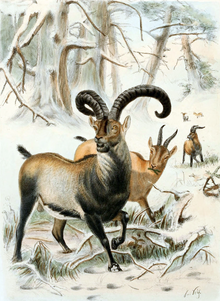
Back إعادة من الانقراض Arabic Desextinció Catalan Deextinkce Czech Wiederbelebung ausgestorbener Tierarten German Desextinción Spanish انقراضزدایی FA Sukupuutosta palauttaminen Finnish Résurrection d'une espèce éteinte French Desextinción GL Pemulihan dari kepunahan ID

De-extinction (also known as resurrection biology, or species revivalism) is the process of generating an organism that either resembles or is an extinct species.[1] There are several ways to carry out the process of de-extinction. Cloning is the most widely proposed method, although genome editing and selective breeding have also been considered. Similar techniques have been applied to certain endangered species, in hopes to boost their genetic diversity. The only method of the three that would provide an animal with the same genetic identity is cloning.[2] There are benefits and drawbacks to the process of de-extinction ranging from technological advancements to ethical issues.
- ^ Yin, Steph (20 March 2017). "We Might Soon Resurrect Extinct Species. Is It Worth the Cost?". The New York Times. Retrieved 20 March 2017.
- ^ Sherkow, Jacob S.; Greely, Henry T. (2013-05-05). "What If Extinction Is Not Forever?". Science. 340 (6128): 32–33. Bibcode:2013Sci...340...32S. doi:10.1126/science.1236965. hdl:2142/111005. PMID 23559235.